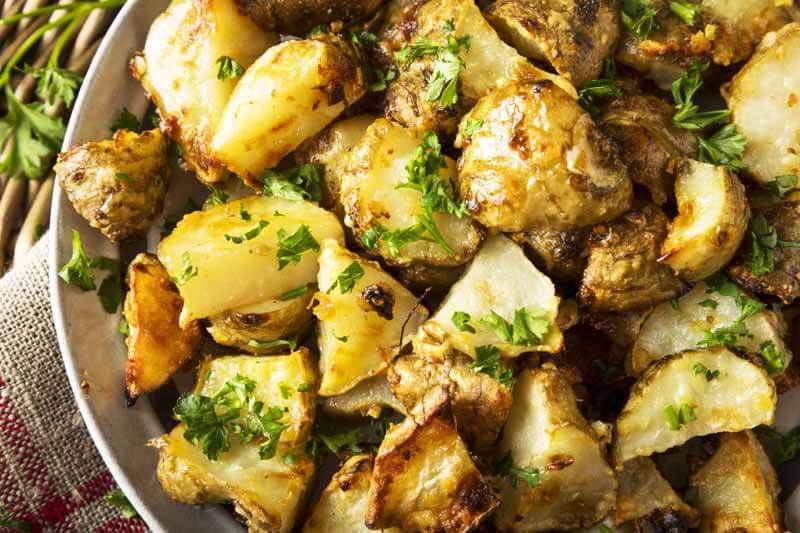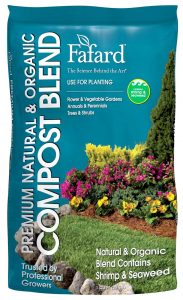
Gardeners who have grown Jerusalem artichoke (Helianthus tuberosus) have a love-hate relationship with it. The tall, fall-blooming sunflower puts on a big show but spreads aggressively by root and rhizome and sends up 8-10-foot stems that tend to fall over at bloom time. Its delicious edible tubers make up for any bad traits. They have a nutty, potato-like taste and can be eaten roasted, boiled, or in soups. When planted in ironclad raised beds, Jerusalem artichokes can be tamed for good fall eating.
Origins and History

Despite its misleading common name, which is hazy in its inception but has European origins, Jerusalem artichoke is North American and a distant relative of artichokes but nothing like them in habit or flavor. It’s widespread across the whole of the continent, illustrating its prolific nature.
Through summer, this hardy perennial (USDA Hardiness Zones 3-9) forms tall, broad, rangy clumps of deep green, scratchy foliage. The golden blooms, which feed bees and other pollinators, appear in mid-fall atop stems that range from 6-10 feet. Wild populations favor forest margins, roadsides, disturbed ground, and meadows.
Native Americans of the Great Plains were the first to cultivate Jerusalem artichoke for food and shared it with early colonists. By the 17th century, it was brought to England and eventually cultivated across Europe and beyond for food and livestock feed. Recently, American markets have begun to sell the tubers again, which has bosted their culinary popularity once again. There are several cultivated varieties but these are most available to commercial growers.
Growing

Jerusalem artichoke is a worthwhile garden plant if you implement management protocols from the beginning. If left to its own devices, it will run rampant and take over a vegetable or flower garden in a jiffy.
Full sun is a must, as is the case with any sunflower. It is remarkably tolerant of a wide range of soils but will not grow in wet ground. Like most garden plants, a little extra fertility helps. Fafard® Premium Natural & Organic Compost is a good amendment if your garden soil is particularly poor.
Plants are typically sold as tubers, though they’ll grow quickly from seed. Sow seed indoors, being sure to follow the packet’s planting instructions. Tubers should be planted several inches down into worked, loose soil in spring after the threat of frost as passed. Each has multiple protuberant eyes; plant them so most face upwards.
Management
If you don’t live in a rural area with wild space–fenceline, grassy meadow, or sprawling bed–grow one plant in a small raised bed, and expect it to fill the whole thing. The raised beds edges should be set at least 6 inches below the soil level to keep spreading roots in check.
By midsummer, cut the rangy plant stems back by two-thirds to encourage a shorter overall height and more flowers. The technique is much like pinching back a chrysanthemum; it encourages more branching and compact growth. Shorter stems also make harvest easier.
Harvest and Storage

Once the stems start to die back in mid to late fall, cut them back nearly to the ground. Then start digging. A long, sharp space is best.
Expect the tubers to extend a foot or more beyond the place where visible stems appear. Dig as deep as 8 to 12 inches to get them all. The bulbous, irregular, ivory tubers feel like potatoes. Dig most of them out, but leave one small clump in the center, if you want a crop the following year. Keep in mind that if you miss just one tiny tuber, it will sprout in spring, so you may have to dig up a few unwanted plants here and there the following season.
Store the tubers in a cool root cellar or vegetable drawer in the refrigerator. They will keep for two to five months, but as they age they will become less plump and their exteriors will turn brown.
Eating

Due to their increasing popularity, there are lots of great recipes for Jerusalem artichokes online. Creamy bisque soups are very popular as are roasted, pan-fried, or sauteed dishes.
Grow Jerusalem artichokes, if you dare. With just a little management, they will reward you with lots of tasty roots for winter. The key is keeping them in bounds.


